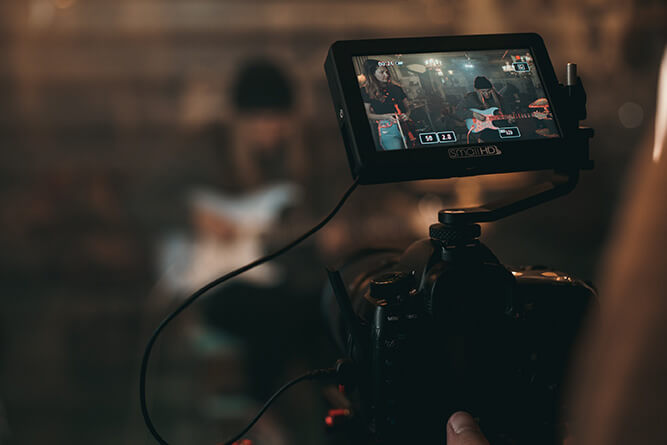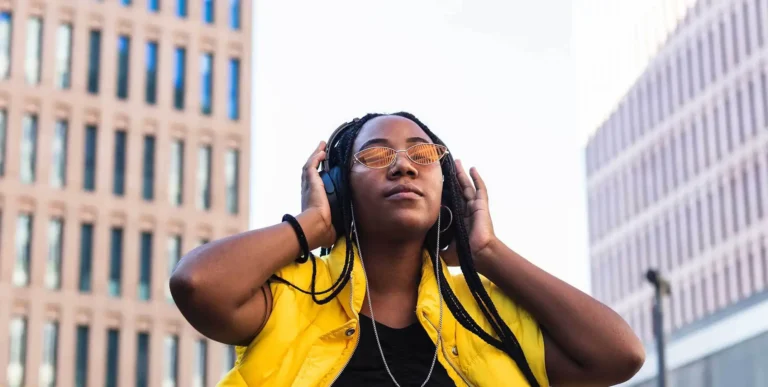“Music expresses that which cannot be said and on which it is impossible to be silent.”
That’s a famous quote from Victor Hugo, and he’s got a point there. We all know that music influences our mood because we’ve experienced it for ourselves. We know that when we listen to certain types of music, we can be overcome by feelings of joy, sadness, elation, excitement, anger and so on.
In a way, all music is mood music because it subtly influences the way that we feel without the need for any effort on our part. It just goes in through our ears and does what it likes in our heads! Over time, we establish an emotional connection with some types of music more than others, and it’s these that we’ll return to when we want to evoke or amplify a particular emotion.
But how can music affect your mood to impact buying behaviour, brand sentiment and other consumer actions? This is what we’ll dig into in this article. First, let’s talk about how music matters for sales.
Why Does Music Matter for Sales?
It would be wrong to assume that music only affects our feelings and thoughts, though. Research suggests that music affects us both physiologically and psychologically. Let’s take a look at how music impacts us.
Music and Physical Well-Being
Surprisingly, music has been shown to have a measurable effect on our brainwaves, which resonate with the tempo of what we are listening to. This means that if you are listening to music that has a regular beat (and isn’t too down-tempo), your brainwaves will actually start to sync with it. In other words, you don’t just tap your toes to a tune, your neurons fire in time with it too!
Perhaps this phenomenon is something that we learn in the womb, floating in solitude for months on end with the insistent pulse of a heartbeat for a soundtrack. But whatever the cause of our brain’s strong affinity with rhythm, it works. Faster, stronger beats tune our brainwaves to make us more focused and alert, while slower music takes us into a meditative and relaxed state. Studies support this:
- Calming music is just as effective as anti-anxiety medication in relaxing the nerves of pre-operative patients before surgery.
- Upbeat music can help you process information faster, while music, in general, can improve memory.
Brainwave activity also stimulates other physical reactions, especially those controlled by the autonomic nervous system, which regulates involuntary functions, such as breathing, heartbeat and digestion.
Research with people suffering from coronary heart disease found that music therapy sessions were particularly beneficial for them. Their blood pressure, heart rate, respiration rate and even their pain levels were markedly reduced after their sessions.
So not only can music influence our feelings and thoughts, but it’s capable of affecting our bodily functions as well. It’s through these psychological and physical effects that music can influence our shopping behaviour and habits.
As an example, listen to how this video that discusses an individual’s healthcare and wellness has a soothing music bed.
Do you hear background nature sounds woven into the soundtrack? Even though the video has a sales focus, the music sets the right tone. We’ll talk more about this below.
Music and Customer Behaviour
Music is a powerful tool to drive action and customer engagement. It can even influence how we shop. According to research, there are 4 aspects of music that can affect your buying behaviour: tempo, volume, genre and mode.
Tempo
Studies have shown that the beat or tempo of a piece of music can have a real impact on how people buy.
In 1982, an experiment was carried out in a grocery store in New York. The focus of this experiment was simple enough — to assess whether the tempo of music had any influence on the buying behaviour of customers at the store. The results? Playing slow music was better for sales.
- When the store played slow music, people lingered for longer in the aisles.
- They also ended up spending 32% more than when the store played music with a faster tempo.
The suggestion here is that they spent longer in the store because they did not feel rushed. The music made them feel that they had time to browse, time to think, and the result was that they parted with more of their cash than if they’d felt rushed.
Another experiment was conducted in a restaurant in 1999 and the results were similar:
- Customers dining to slow music spent nearly 14 minutes longer than individuals dining to fast music.
- When slow music was playing, customers spent significantly more on food and drink than when fast music was playing.
Of course, the ideal music to play would depend on the type of eatery. Fast food restaurants offer lower-priced food and rely on a lot of customer turnover, so it makes more sense for them to play music that encourages patrons to keep moving.
On the other hand, more up-market, fine-dining restaurants want their customers to stay longer, buying drinks and ordering more courses. Relaxing, hanging around and feeling happy are great for loosening up wallets. That’s why these establishments often play classical music that signals refinement, sophistication and puts customers at ease. (Maybe it helps to lower the patron’s pulse at the sight of the final bill, too.)
Volume
The volume of music has also been found to affect consumer behaviour, but with a slight difference: it is more age-dependent.
One study found that older shoppers spent more time in a store when the music was soft, less intrusive and in the background, and they spent less time if the music was loud and in the foreground. For the younger shopper, just the opposite was true! This is why many stores and restaurants play personalised music for their target customers.
Genre
According to yet another study, it was found that playing a particular genre of music also had an impact on buying behaviour.
The experiment was conducted in a wine store and revealed that when classical music was played in the background, people tended to buy more expensive wines. Not only that, but when regional music was played, more customers bought wine from that country.
We’ll discuss more about music tempo, volume and genre below, but the upshot of all of these studies is that music can and does influence buying behaviour. And the more targeted the music selection, the better the buyer’s response.
Mode
Mode refers to if the music is written in a major or minor key. National anthems and battle marches? Those tend to be in major keys. Pachelbel’s Canon in D that so many brides walk down the aisle to? That’s D Major.
Minor keys communicate more subtle emotion, often sadness or a touch of something bittersweet. They’re chosen for moody ballads and evocative hymns. If you’re watching a suspense thriller and music plays as the protagonist heads to the basement (why must they do that?), it’s probably in a minor key. Lady Gaga’s smash hit “Bad Romance” with all its gritty overtones is in A minor.
Why does any of this matter for sales? Because researchers have found that certain combinations of mode and tempo can affect purchase behaviour. Downtempo music in minor keys have been shown to increase in-store purchases.
Your mileage may vary. You could actually do a slight test comparing days that have similar foot traffic in store and just changing up your playlist. If you do, let us know what you find out!
The Impact of Music and Video
In today’s world, it’s becoming harder to talk about music as a distinct entity because so much of it is delivered to us in the form of videos. There was a time when everyone got their music via the radio, vinyl or cassette tapes. They listened in their cars, at home, through headphones on a Walkman.
Back then, the only time music came with moving images was on TV (when daily viewing hours were much lower than they are now) and at the movie theaters. In those days, the majority of music consumption was just music. Not so today. Now, a lot of music content comes as part of a video so the impact for the consumer is both auditory and visual.
A common example is music videos, first popularised with MTV in the 1980s but now reaching a much higher market saturation thanks to the internet. People of all ages today are exposed to music videos and videos with music (not the same thing, precisely) on YouTube, Facebook, TikTok and other social media platforms. YouTube, for one, is so popular that obscure albums of yesteryear that could previously only be found in dusty record shops are now available with a simple search.
But we’re not just talking about music videos here, a hit song with creative choreography (or, you know, diamonds costing over $10 million). Music is an integral part of business videos as well, serving as a soundtrack or even a branded intro and outro. We admit, this is our favourite part of talking about music. Let’s dig into how to choose the best music for your brand video below.
How Can You Choose the Best Music for Your Business Video?
As a marketer or business owner, you might be feeling a little confused about how to choose the right music for your promotional or informational video. You may have invested a good deal of time, money and effort in getting an animated explainer or live-action product launch just right, so you want the right music to accompany it. We know video marketing can be hugely effective in grabbing customer’s attention, but with so many tunes out there, how do you know which track will have the desired impact?
Don’t despair. You don’t need to be an expert in the psychology of influence to choose the right music. You just need to consider what kind of music is going to leave your viewers with the impression you want.
It all goes back to those three influential elements. Check out the examples below.
1. Pick the Right Tempo
Remember that our bodies and minds can subconsciously sync with the tempo of a song. If you want to get your viewers excited, go for more upbeat tempos. Slower, mellow tempos, on the other hand, are ideal for that calming and soothing effect.
Pro tip: Sending a personalised insurance explainer or an onboarding welcome for new banking customers? A high-tempo beat could be stressful rather than energising when you’re talking about money matters.
Orangetheory Fitness didn’t have to look too far to find the right tempo for their video campaign. They wowed their customers by using a soundtrack created from each member’s heartbeat when working out! The BPM-based beat was the perfect music to get their members pumped up for more workouts with the programme. And the fact that it was personalised is a great move when it comes to reducing customer churn.
2. Make Sure the Volume Fits
Just like how music volume can affect a customer’s behaviour while they shop, the volume of the music in a video can impact how the viewer absorbs the content. Should the music be setting the mood of the video by being front and centre? Or is it more of a background element whose influence is more subtle?
Take the Personalised Video below as an example. The mid-tempo track sets the tone for the clip, but the lowered volume of the music allows the narration (which is pretty important — we’re talking about a customer’s mortgage) to take centre stage.
3. Understand the Power of Genre
So how does music affect your mood? This is where the power of genre comes into play.
Research shows that not all genres of music are equal. Some genres are actually quite good for you — they enhance your mood and your ability to regulate your emotions effectively. They make you feel good. Conversely, there are other genres of music that can have a not-so-great impact on you. Some music can darken your outlook, make you more negative, and make it harder to beat depression, anxiety or other mood disorders.
You may be thinking of heavy metal at this point, but that’s not necessarily the case. Fans of this music often find it cathartic, a way of releasing negative emotions. So beware of judging every book (or doom-laden guitar riff) by its cover.
When we talk about the power of genres, we’re not generalising. As marketers, we need to find what genre works best for our unique audience.
Music you choose for your brand video will ultimately be associated with your business. As such, it can influence brand sentiment, that is, the emotions or feelings connected to your brand. Powerful stuff. It’s worth getting right.
Here’s an example of a video with a great soundtrack. See how the rock elements in the track of Ubisoft’s Personalised Video align perfectly with the exciting emotions that its games bring to players.
What genre is best for your video will, of course, depend on who your audience is. Different generations have distinct impressions and memories of certain genres. For example, disco may be nostalgic for Baby Boomers yet retro for millennials.
Keep in mind that younger generations like Gen Z are starting to prefer and expect genre-bending or genreless music.
Sourcing Music for Your Videos
There are plenty of online music libraries that businesses can get music from, such as:
Try to choose royalty-free music. With royalty-free music you only pay a one-time fee for the right to use it. As the name suggests, you don’t need to keep paying royalties to its publisher, which takes the guesswork out of budgeting for it.
If you have the budget, then feel free to consider using original music — but be prepared to pay a composer (a lot) for the privilege.
You can also take advantage of music that’s completely free to use, such as in YouTube’s Audio Library linked above. Just be sure to check the copyright. For some soundtracks, you don’t need to provide credit, but others require attribution.
Pro tip: Test your hunches on someone who is similar to your target audience. They can probably get you much closer to the final choice than you could on your own.
Music: A Tool for Personalisation
So does music affect your mood and, sometimes, even buying behaviour? Absolutely. There is no doubt that music plays a key role in our lives and can influence our emotions and decisions.
As marketers and CX pros, we can also use music to improve our video marketing strategies and enhance the experience of our customers. By selecting the right music with our target audience in mind, we can deliver personalised content to viewers that boosts engagement and our bottom line.
We’d love to show you how you can personalise videos with dynamic music and more and ways this can boost sales for both current and prospective customers. Curious how it works? Just schedule a call, and we’ll get in touch.







